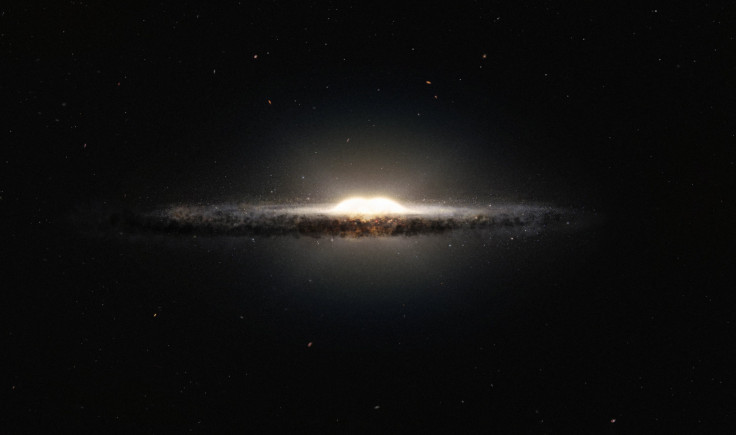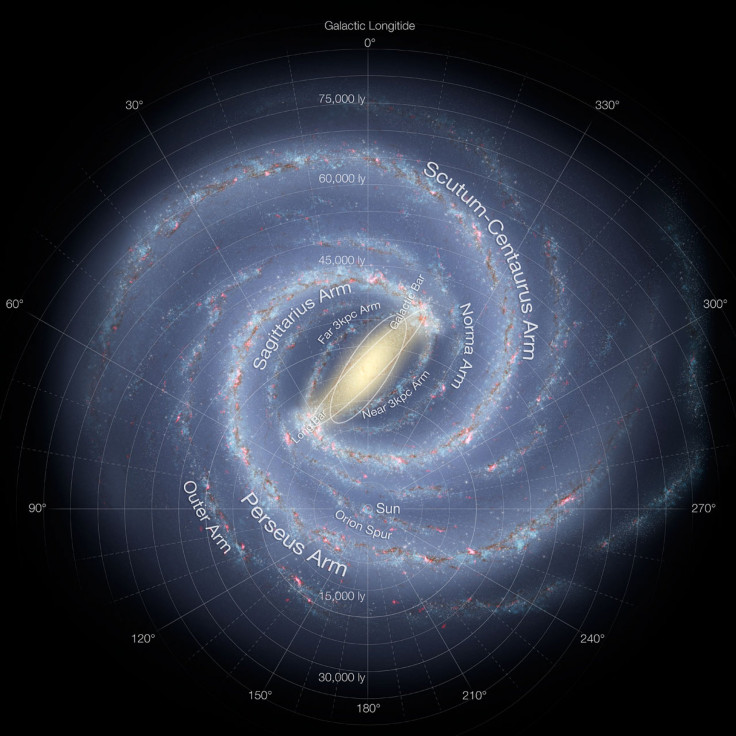The Best 3D Map Of The Central Bulge Of The Milky Way Reveals A Peanut-Like Structure
Astronomers, using different European Southern Observatory, or ESO, telescopes, have created the most detailed map of the central bulge of the Milky Way. The central bulge, which is the heart of the galaxy, is home to about 10 billion stars, and the new map will help researchers discover the structure of the bulge as well as learn more about its origins.

Depending on the viewing angle, the inner region of the central bulge has an X-shaped, or "peanut-like," structure, notes ESO. Astronomers on Earth cannot view the central bulge directly, as it is obscured by dust clouds, and must measure infrared radiation in order to make any observations of the bulge.
Two teams of researchers used different infrared data, collected by ESO telescopes, to create the new map.
A team from the Max Planck Institute for Extraterrestrial Physics, or MPE, located in Germany, used ESO's Visible and Infrared Survey Telescope for Astronomy, or VISTA, which is part of the Paranal Observatory in Chile, to create the map of the central bulge. The team's research was published in Monthly Notices of the Royal Astronomical Society. The VISTA Variables in the Via Lactea, or VVV, survey observed more than 22 million stars, red clump giant stars whose distance can be easily calculated, within the central bulge.
Lead author Christopher Wegg, said in a statement: "From this star distribution we can then make a three-dimensional map of the galactic bulge. This is the first time that such a map has been made without assuming a model for the bulge’s shape."
The astronomers' work in creating a new map of the central bulge of the Milky Way led to some interesting observations about the bulge's structure. Based on the viewing angle, the inner region of the bulge has a peanut-like shape, when viewed from the side, or a bar shape when viewed from above.

The MPE team was focused on the central bulge's structure while a second team wanted to understand the motion of stars within the central bulge.
Led by Sergio Vásquez, a PhD student from Pontificia Universidad Católica de Chile, the team studied the motion of galactic bulge stars within two arms of the X-shaped structure. The researchers can then use these measurements to determine the accuracy of central bulge models used by astronomers. This study was published in the journal Astronomy & Astrophysics.
According to ESO, astronomers believe the Milky Way was once a pure disc of stars that later developed the bar as stars collapsed inward. The bar structure is what makes the Milky Way a barred spiral galaxy and this structure is commonly found in other galaxies.
Vasquez said in a statement: "The stars we have observed seem to be streaming along the arms of the X-shaped bulge as their orbits take them up and down and out of the plane of the Milky Way. It all fits very well with predictions from state-of-the-art models!"
© Copyright IBTimes 2024. All rights reserved.








